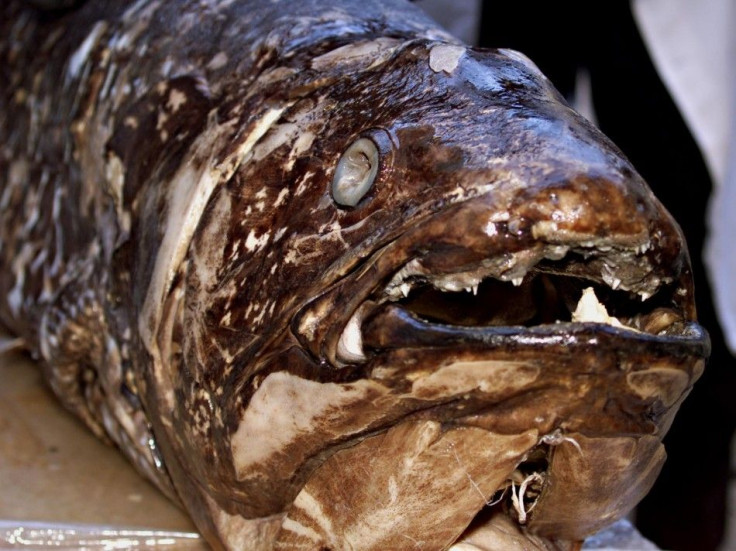Accidental Discovery: Pterodactyl Search Reveals Massive Coelacanth Fossil Instead
KEY POINTS
- Researchers discovered the fossilized lung of a massive coelacanth
- The fossil was discovered while identifying a possible part of a pterodactyl skull
- The discovery points to the last record of the species before its "pseudo-extinction"
Scientists have discovered evidence of an ancient massive coelacanth by accident. According to the researchers, the specimen points to the largest coelacanth ever found.
It was when scientist Professor David Martill was asked to help identify a bone from a private collection in London that the discovery was made, the University of Portsmouth news release explained. The owner of the specimen reportedly thought that it was part of a pterodactyl's skull, but what the scientists found instead was the massive lung of an ancient fish: the coelacanth.
"The thin bony plates were arranged like a barrel, but with the staves going round instead of from top to bottom," Martill, co-author of the study describing the find, said in the university news release. "Only one animal has such a structure and that is the coelacanth - we'd found a bony lung of this remarkable and bizarre-looking fish."
And this particular fossilized lung was quite large. Based on its size, the researchers estimated that the creature might have been about 3.65 to 5.52 meters long when it was alive. That's much larger than today's coelacanths, which only grow up to 2 meters.
First And Last
This makes the accidental discovery rather special because it may actually be the largest coelacanth ever discovered, Martill noted. What's more, the specimen is said to be the first record of a coelacanth in Morocco but also the last record of the species before its "pseudo-extinction," the researchers explained in their study, published in Cretaceous Research.
Very cool find! An isolated, articulated, but crushed ossified lung of a mawsoniid #coelacanth is reported from the uppermost Cretaceous (upper Maastrichtian) of Oued Zem, Morocco.
— John P. Friel, Ph.D. (@friel) February 15, 2021
DOI: 10.1016/j.cretres.2021.104768 pic.twitter.com/VdJF58Qcdr
Now, the specimen will be returned to Morocco to be added to the Department of Geology at Hassan II University of Casablanca's collections, the University of Portsmouth noted.
Are Coelacanths Living Fossils?
First appearing some 400 million years ago, coelacanths were thought to have gone extinct but were rediscovered in 1938 off South Africa. They are often considered "living fossils" because they are essentially identical to the coelacanths in the fossil record.
However, a recent study also found that they may not be the living fossils many think. Although they practically look identical to their ancient counterparts, the researchers found that they have gained 62 new genes. This suggests, the researchers said, that coelacanths are actually evolving, albeit slowly.
But whether today's coelacanths are living fossils or not, it's undeniable that they are incredible creatures that give us a unique glimpse of the very distant past.

© Copyright IBTimes 2025. All rights reserved.






















